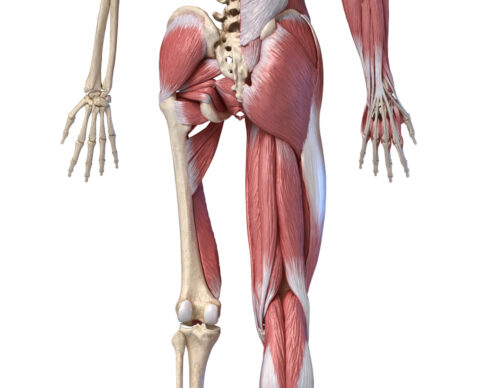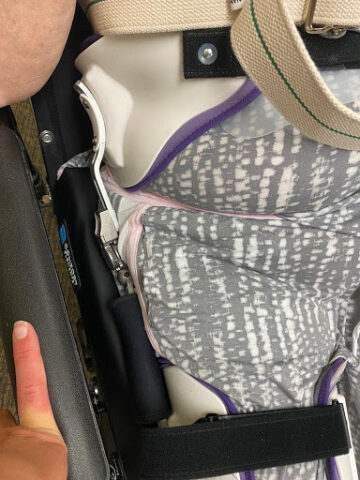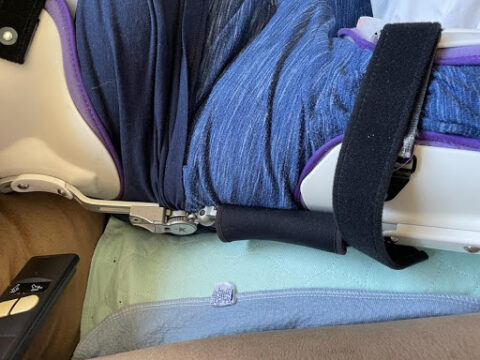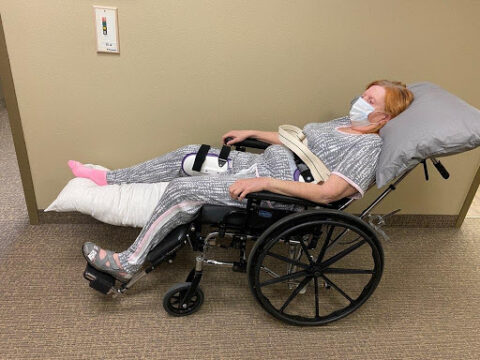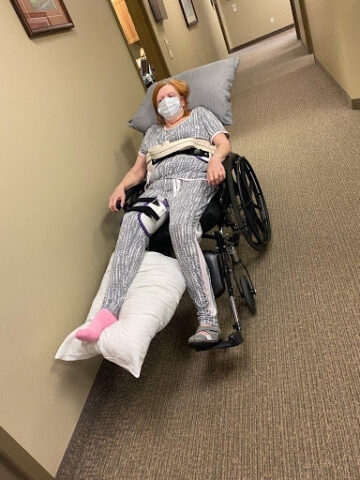Abductor Tendon Tears
The gluteus medius and minimus muscle tendons work together to stabilize the hip. These tendons are like the rotator cuff of the hip. These tendons insert on the upper portion of the femur at the greater trochanter. Inflammation and/or degeneration of these tendons is called abductor tendonitis. Chronic inflammation of these tendons or trauma to these tendons can result in an abductor tendon tear.
SYMPTOMS & DIAGNOSIS
Patients with abductor tendonitis and/or an abductor tendon tear often present with chronic lateral sided hip region pain. On physical examination, patients are often markedly tender to palpation over the greater trochanter. They may have an abnormal gait called a Trendelenburg gait. A Trendelenburg gait occurs from the weakened abductor muscles and therefore, the pelvis shifts downward to the contralateral side (nonweightbearing side) when walking. The only definitive way to diagnose abductor tendonitis and/or abductor tendon tearing is to order an MRI of the affected hip.
CAUSES OF ABDUCTOR TENDON TEARS
The gluteus medius and minimus tendons can become inflamed and/or tear for a variety of reasons including nicotine use, excess caffeine intake, trauma to the tendons, limited protein intake, use of the antibiotics Ciprofloxacin and/or Levaquin, sleep apnea and frequent cortisone injections into the greater trochanteric bursa. Additionally, hormonal and/or metabolic imbalances such as low vitamin D and hyperparathyroidism can also contribute to abductor tendonitis and/or abductor tendon tearing. We often work up and address any potential causes of the abductor tendonitis/abductor tendon tearing before considering surgical intervention.

TREATMENT OPTIONS
Conservative treatment options for abductor tendonitis include a course of supervised physical therapy, activity modifications, chiropractic care, use of a cane or walking sticks when ambulating to take the pressure off the lateral aspect of the hip and/or anti-inflammatory medications as needed for pain relief. Another treatment option for chronic abductor tendonitis and/or abductor tendon tearing is a platelet-rich plasma injection. Platelet-rich plasma (PRP) injections have been found to be safe and effective in some cases for the treatment of abductor tendonitis and abductor tendon tears. PRP injections are created from the patient’s own blood. Approximately 30-60 cc of blood is drawn from the patient on the day of the procedure. The blood is placed in a centrifuge machine and spun down, which takes approximately 20 minutes. The platelet rich plasma, which is approximately 5-10 cc, is then injected into the abductor tendon to facilitate healing/repair of the damaged tendon. These injections are performed in our office on Friday afternoons. This treatment option is infrequently paid for by insurance companies.
If a course of conservative treatment has been exhausted without substantial improvement in a patient’s symptoms, surgery can be performed to repair the tendon by reattaching it to the bone. The procedure is straightforward, is done as an outpatient surgery and relatively low-risk but the recovery is a long, difficult process. In order for the tendon to heal it needs to be immobilized for two to three months after the surgery in a brace. You are not allowed to put any weight on the operative leg. Often times patients need to go to a rehabilitation center or nursing home for that entire time. The greatest risk of the surgery is that after several months the tendon just doesn’t heal and the symptoms still persist.
Would you like more information? Follow the links below for hand outs and videos regarding Abductor Tendon Repairs
- Abductor Tendonitis – Patient Instructions PDF
- Postoperative Instructions PDF
- Abductor Tendon Repair Physical Therapy Protocol
- How To Wear And Care For A Hip Abductor Brace Video
Here are some helpful images on how to wear the Abductor Brace




